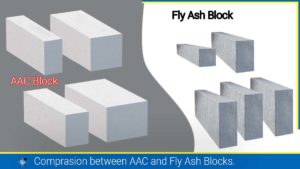Haunched Beams
Haunched beams are a type of beam that has varying cross-sections over its length. The varying cross-section of a beam is provided to increase its moment of inertia and therefore its capacity to resist bending and shear forces. Consequently, it is provided at the support where the beam meets the column or where the bending moment is maximum. For example, the cantilever beam may be designed as a haunched beam to resist the moment.
Features of Haunched Beams:
- Depth and length: The length of the haunched is \( \frac L{10}\;to\;\frac L8 \) and the \( L \) is the effective length of the beam. The depth may depend upon the length of the haunched. However, the slope of the haunched is considered as 1:3.
- Increases Support: The beam is typically deeper (thicker) at the ends near supports and gradually tapers down towards the midspan. This design is particularly effective in resisting bending moments that are higher near the supports.
- Bridges and large structures: Bridges and large-span structures where significant loads are concentrated at specific points such as the junction of columns and beams are commonly provided with haunched beams.
Also, read: Flat Slabs: Its 4 Types, Advantages and Disadvantages
Reinforcement for Haunched Beam
- Longitudinal Reinforcement Bars:
- The tension reinforcement or longitudinal reinforcement bars for the uniform beam and haunched beam remain the same.
- The compression reinforcement may be modified with the bent of the required angle for the haunched beam.
- Additional Reinforcement Bars:
- This is an additional reinforcement bar provided parallel to the haunch to provide support to the shear reinforcement bar near the support.
- They are provided inside the shear reinforcement bar to prevent them from falling out.
- Shear Reinforcement Bars:
- For the shear reinforcement bars (U-shaped or closed-loop bars), their parameters may decrease toward mid-span starting from the end.
- Their position may be perpendicular to the haunch or positioned as normal. However, most designers and construction workers prefer the normal position of the stirrups.
- They may be placed closer to each other compared to mid-span as in uniform beam to resist the maximum shear near the support or end span.
Also, read: Removal of Formwork: Stripping of Formwork
FAQs:
Q: What should be the length of the haunch in the beam?
Ans: The length of the haunch is considered to be between \( \frac L{10}\;to\;\frac L8 \) in the beam. Where \( L \) is the effective length of the beam.
References:
- SP 34. (1987). Handbook on Concrete reinforcement and detailing. Bureau of Indian Standard
- Haunch beam. (n.d.). https://help.scia.net/20.0/en/rb/modelling/haunch_beam.htm
![]()







